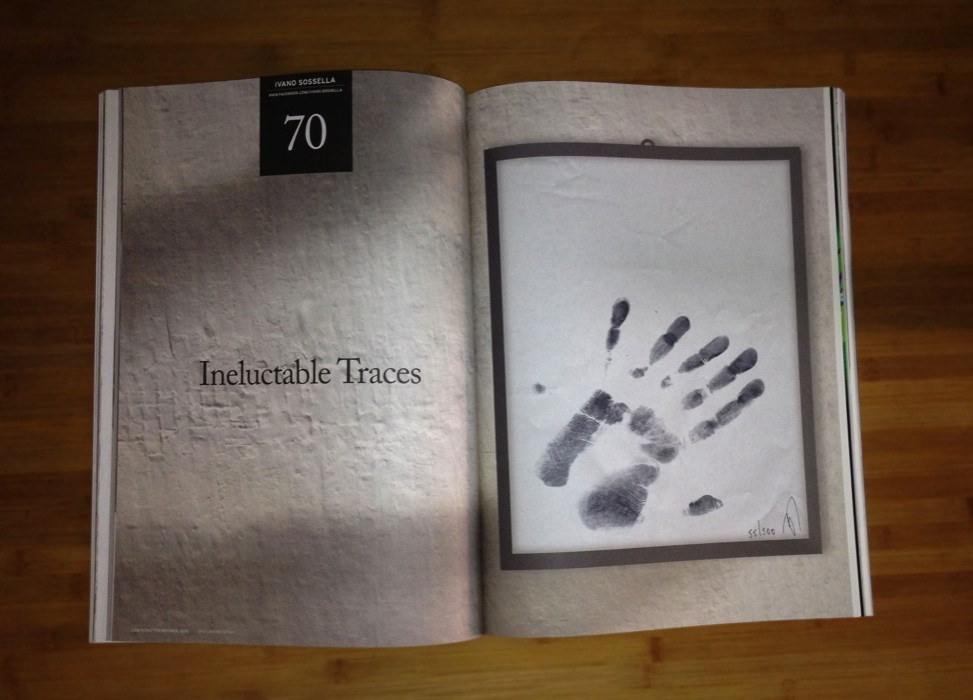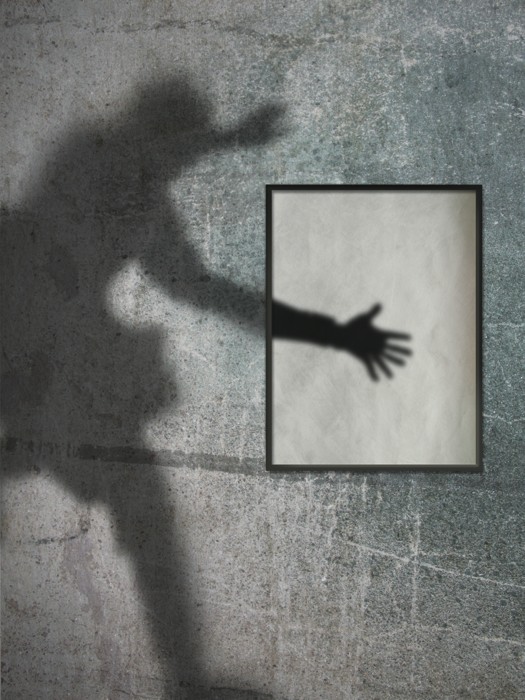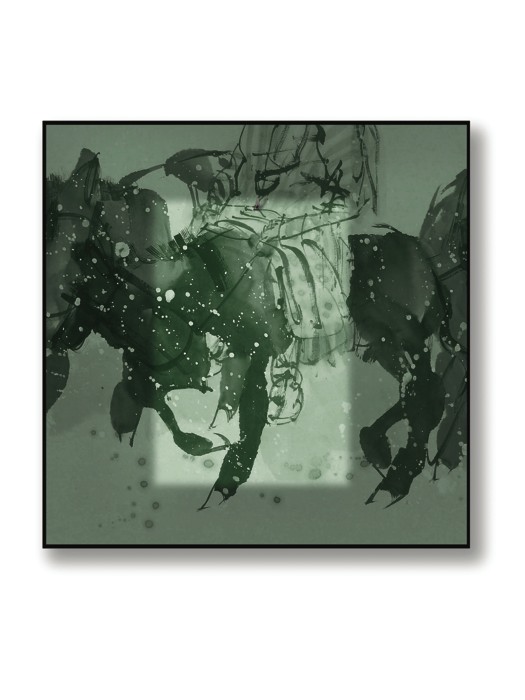The intention of a (contemporary) artistic process is not celebrating an icon, but discovering what it conceals.
There are artistic experiences marked by radical changes, but there are also others which demonstrate total mental awareness from the very beginning and for which only the means of expression change over time.
Right from his debut in 1987, Ivano Sossella recognised the need to interpret a work of art not in relation to its subject, but through a system of relationships, using strict analytical and conceptual intuition. However, Sossella simultaneously demonstrates a degree of emancipation from the most radical rejection of the aesthetic aspect, recognising the role it plays, accessory and instrumental to all intents and purposes. This is precisely why Disciplinatamente (1987) – «a toy car going round and round on a museum floor» (1) – does not allude to movement, but concentrates on the un- real and ephemeral mark left by the passage of an object.
Other works on display at the same exhibition portray an impossible dialogue; Ra- dioPhon (1987) plays on automatic processes and offers an inexplicable sense of harmony, impossible on first glance. The idea is developed through an unexpected exchange of instruments and shares this with the public. This is how, from the be- ginning of his journey, Sossella draws near to the experience of Fluxus and principally to that of Giuseppe Chiari.
«Art is the chance to create a strategy for spreading an idea»(2), which is precisely why the most effective means of cir- culating an idea is transforming it into a communicable form, in relation to what is normally not identified as art. Sossella uses the voice as a maximum expression of communicability – including artistic – and indeed «the voice being heard by the speaker is not the same voice being heard by the listeners: the voice heard by others occupying the real world. An unheard voice is not real. It has no form, it is unreal, since it is the listeners who verify – or turn into reality – every form». (3) It is clear that the artist’s interest glides towards language and the artist’s voice finds a precise correspondence in words and in the documents to be distributed when the work is published (4). The need to overcome the static relationship between the observer and the icon leads Sossella to focus interest on circulation of the work itself and the meaning of its presence. «The work remains an artifice, a theoretical goal rather than an actual point of arrival. The medium of this operation (usw/Mauer) is, first and foremost, a detailed and analytical investigation of the language of art, but also the point at which to break down the works and their language and concentrate on the means through which art truly communicates». (5)
This is the case of the Supplemento project, a publishing project the artist has been pursuing for several years, which examines the relationship between communicability and the spread of language. The mass disclosure and reproduction of art therefore disrupts the concept of art as an effigy, taking it into every place. The work therefore attempts to achieve a parallel evolution both to the transcendence of the sign and to the evocation of a message which sometimes prompts the work to take a playful approach to its development (Work on distribution).
This trend continues in the most recent works, such as Wetfloor (2012), der Geist (2014), Tiratela (2015), which plays with the idea of precariousness and precarious equilibrium, an aspect which is most evident in other new works from the apparent absence of a subject.
The absence of matter is not a mutilation of the senses in this case, but an incentive to investigate and an invitation towards a new level of communication, characterised by the presence of Nothing. «Nothingness swallows all of us and also digests us. We can only escape this end, as miserable as it is unavoidable, the void which Nothingness imposes on the mind, if we disguise Nothingness and turn it into something common- place: Nothing. Nothing is a tractable and commercial form of Nothingness: its heart lies in compromise and convention. A place of words and calculation, the earthly shadow of the unfathomable Nothingness which, without the spoken word, eliminates reasoning and opens the heart. Eyes closed on Nothingness, therefore, and senses open and ready for Nothing. We enter an old abandoned house, seeking a piece of interesting furniture, perhaps a forgotten painting, some silverware: if we leave without anything, items of furniture or valuables, we should say we have found Nothing. The house exists and something else as well, but Nothing of what we wished to find: it is a house certainly full of oxygen and nitrogen, wallpaper and parquet, but also capable of conserving a small and subtle Nothingness: the Nothing we found there».(6) It is these words of the artist himself which allow us to understand the role of his most re- cent works (usw/DerGeist), in which the empty space on the wallpaper is not the residue of a lost idea, but emphasises the presence of the work.
Andrea Fiore
(1) E. GRAZIOLI, Pre-supplemento, in Supplemen- to, 1991-1996, Milan 1999, p. 19.
(2) E. PEDRINI, Lineare/Non lineare, Dall’arte (Dissipazione) al Fuori Artista, Genoa 1992, p. 34.
(3) I. SOSSELLA, Exporre-Imporre, Milan 1988, p. 5.
(4) E. PEDRINI, Lineare/Non lineare …, p. 33.
(5) A. VETTESE, Due montagne, in «Supplemen- to», 1991.
(6) I. SOSSELLA, Niente è arte, 2013. LINK









